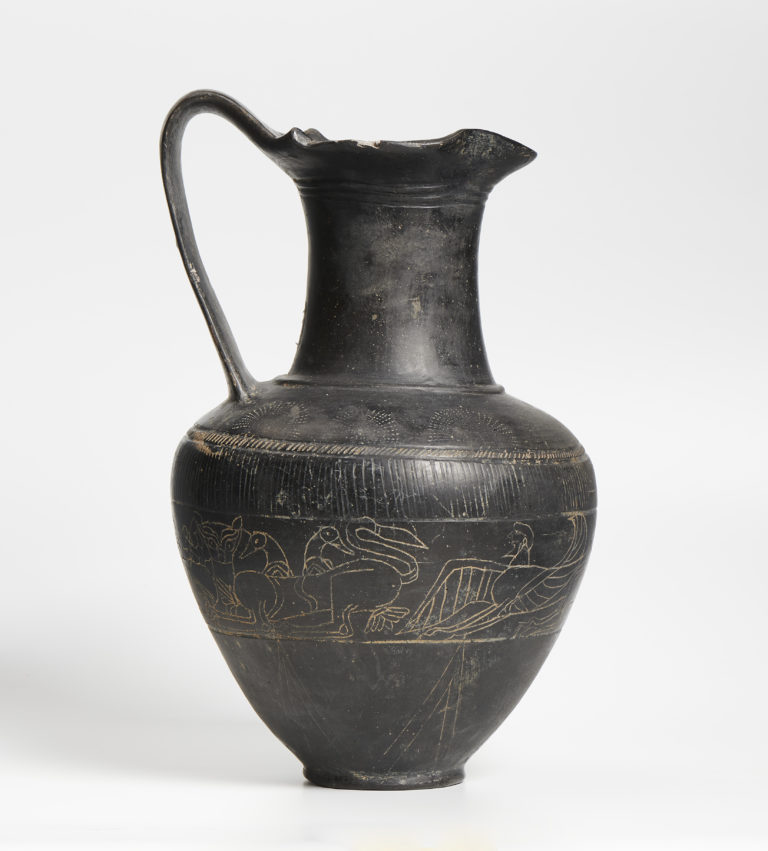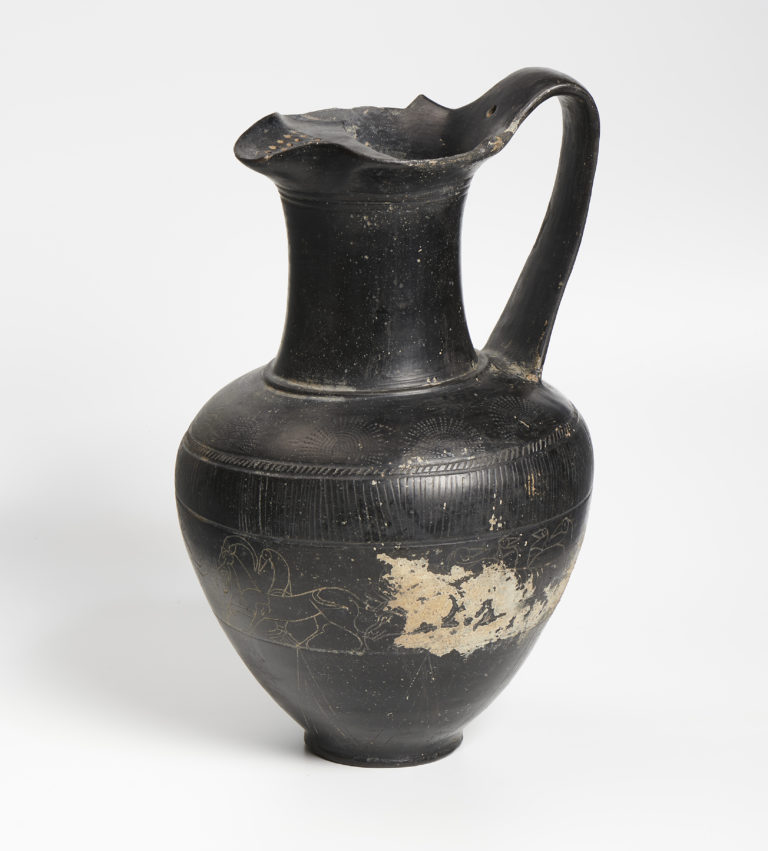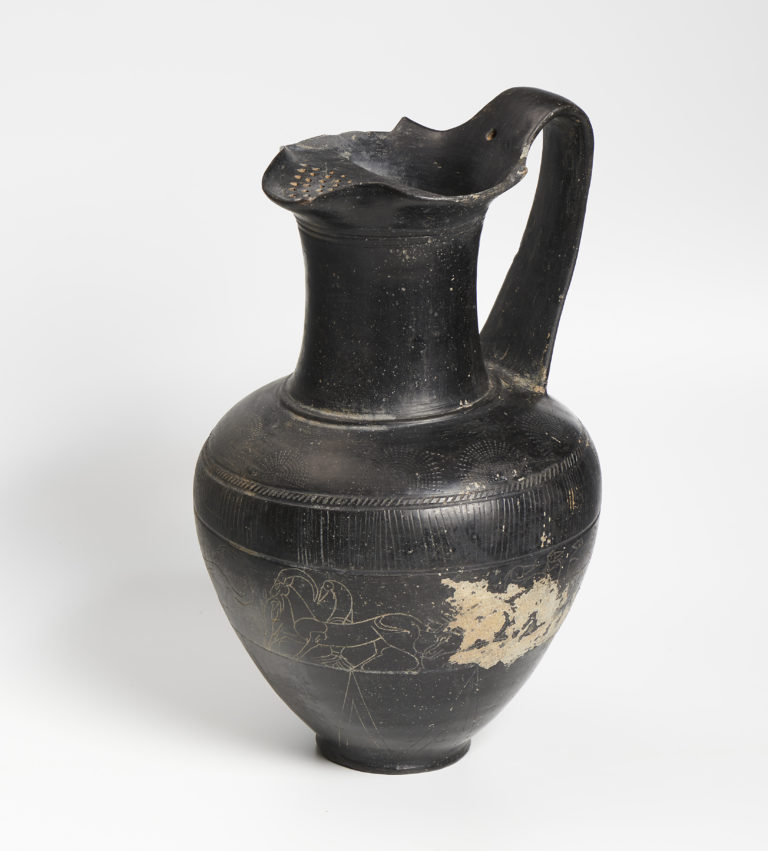Bucchero trefoil oinochoe
Arts Antiqua AG, Lucerne, 1968
Private collection, Switzerland, from the above
Gisela M. A. Richter,
“The Technique of Bucchero Ware.” , in: Studi Etruschi, 10, 1936, pp. 64–65, pls. 23
Nancy Hirschland-Ramage
Studies in Early Etruscan Bucchero. In: Papers of the British School at Rome 38, 1970, 1–61
Markoe, Glenn and Nancy J. Serwint
Animal Style on Greek and Etruscan Vases : An Exhibition at the Robert Hull Fleming Museum, Burlington 1985, no. 41, p. 44
J.M. Padget
The Centaur’s Smile: The Human Animal in Early Greek Art 2003, 212 ff.
The decoration on this trefoil oinochoe is of especially fine quality, with an animal frieze incised into the burnished surface. The body depicts a sphinx, a goat browsing a bush and a goose followed by two panthers. Several geese are represented in the background. Floral decoration on the shoulder, geometric patterns of double triangles on the lower body.
Note
As mentioned by R. Wallace (The Centaur's Smile, The Human Animal in Early Greek Art, p. 212) bucchero pottery is "the quintessential Etruscan ceramic fabric distinguished by its black color and burnished surface... [it] first appear[s] at Cerveteri, in southern Etruria, in the second quarter of the seventh century B.C., having developed from the impasto fabric of the preceding two centuries." This oinochoe was produced during the bloom of the Orientalizing period in Etruria. The animal motif, the composition and rendering of this bucchero sottile vase, are unique to the Etruscan style, which is said to be derived from East Greek and Corinthian vase-painting.









